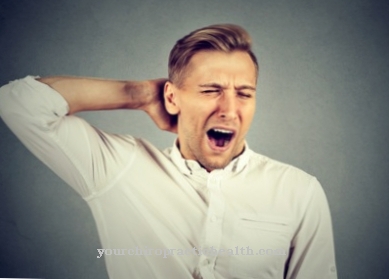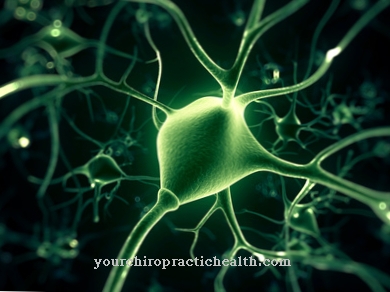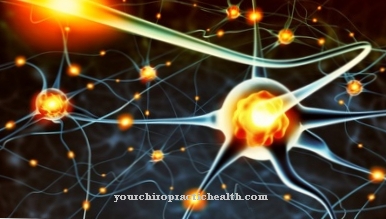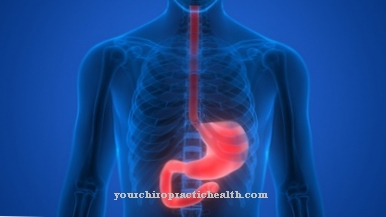Sexual intercourse is usually through that sexual arousal of those involved. It makes reproduction more attractive and gives pleasure. The sexual arousal takes place in different phases.
What is the sexual arousal?

Only sexual arousal makes painless sexual intercourse possible. In the excitation and plateau phase, the psyche and body prepare for the upcoming act. In this way, the basic physical prerequisites for sexual arousal are already in place, such as the development of an erection.
The excitement can drag on for a longer or shorter period of time. So it is quite possible that the phase lasts for a few hours. Sexual arousal begins with a certain reflex, which can be triggered by various factors. These include, for example, visual stimuli or touch, but also the consumption of erotic material.
At the end of sexual arousal there is usually another reflex: orgasm. Sexual arousal increases continuously during intercourse. Muscle contractions occur at the end of which the participants feel an orgasm.
While in most species reproduction is ensured by shoots, humans usually experience intense sensations from the sexual act.
Function & task
The sexual arousal changes the blood vessels in the pelvic region. Overall, the pulse and heart rate increase.
The penis is an erectile tissue. During sexual arousal, complex processes cause the veins to widen. In this way, more blood flows into the vessels and an erection occurs. In women, however, the increased blood flow to the intimate zone leads to swollen and reddened labia and clitoris. The vaginal entrance is exposed through the change in the labia. At the same time, the smallest glands at the entrance ensure increased fluid production. The two outer thirds of the vagina widen. Together with the moist mucous membranes, painless penetration of the penis is possible.
During sexual arousal, the clitoris is usually perceived as particularly sensitive. The size of the breasts can swell, and the nipples themselves become hard and erect. Uncontrollable twitching of the muscles may occur under certain circumstances.
In men, during very strong sexual arousal, in some cases the drop of pleasure comes out.
The excitement can be consciously maintained or increased. The starting point here is touch and visual stimuli, but also erotic thoughts, films or stories. In this way, it may be possible to delay the orgasm or to speed it up.
The episode of sexual arousal takes place in a different way in each person and cannot be generalized in principle. Overall, the arousal phase prepares the next sexual act. It forms the basis of a pain-free process and an orgasm.
Illnesses & ailments
Different complaints can occur in the context of sexual arousal. Women in particular often have difficulty achieving orgasm. The starting point here can already be vaginal dryness. Especially during the menopause, there is an increased occurrence of unwanted lack of moisture and the resulting pain during sexual intercourse.
The most common cause is hormone imbalance. If the equilibrium is disturbed, for example due to a falling estrogen level, the symptoms can arise. The labia and vagina are no longer supplied with sufficient blood. This can cause cracks through penetration and the mucous membrane becomes easily injured.
Sexual arousal occurs not only physically, but also through thoughts and ideas. However, certain problems and sensations can curb pleasure. These include, for example, fears, nervousness or stress.
If there are emotional complaints, vaginal dryness cannot be ruled out. The same applies to sexual partners to whom the female part is not attracted. An orgasm disorder in women has many causes. In most cases, however, these are also emotional complaints or a lack of empathy on the part of the partner. Physical components are rarely the trigger.
Men may not get an erection during sexual arousal. Here, too, the psyche often plays a decisive role. If there are stressful situations, an erection may not be achieved. However, this is usually not a permanent condition.
If the erectile dysfunction persists, other factors can also be considered. These include, for example, circulatory disorders, diabetes, lipid metabolism disorders, chronic kidney failure or an unbalanced hormone balance. Furthermore, external influences such as nicotine and alcohol can reduce potency.
In addition to certain medications, local diseases such as testicular or prostate inflammation can also prevent an erection. However, most of the triggering components can be treated well. Nevertheless, a generally decreasing potency can be expected with advancing age.
Sexual arousal can be influenced by circumstances in the partnership. In addition to frequent arguments and disagreements, these also include a lack of confidence to be able to speak openly about existing sexual desires. As soon as these do not find fulfillment in the long term, a state of sexual dissatisfaction can develop in some people.



























